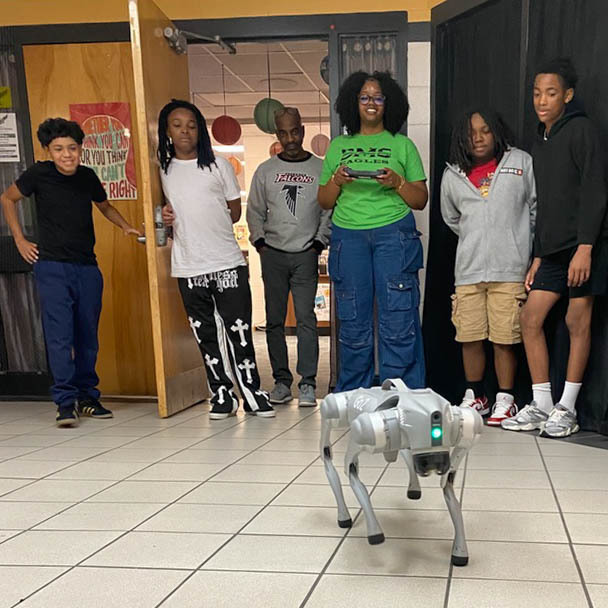Seventh-grade science at Stewart Middle School recently reached new heights thanks to Robert  the robot dog, a four-legged robotic model. The project offered students an interactive way to compare programming robotic traits and influencing traits in living animals.
the robot dog, a four-legged robotic model. The project offered students an interactive way to compare programming robotic traits and influencing traits in living animals.
Aimed at making abstract science concepts more concrete and relevant, the lesson explored how humans shape traits in living organisms through selective breeding and genetic engineering.
Students observed the robot dog demonstrating traits such as speed, agility and obedience. In small groups, they chose traits for their “ideal dog,” then discussed how those could be achieved through selective breeding, genetic engineering or coding. Finally, they compared the benefits and challenges of each approach in group discussions.
Scholars came away with a deeper understanding of how humans influence traits both naturally and artificially, while also recognizing differences between the slower process of breeding and the more direct methods of genetic engineering or coding.
Science teacher Jourdan Bunkley said she was proud of the project’s meaningful impact on her students.
“It gave my students a tangible way to connect abstract concepts like selective breeding and genetic engineering to real-world applications,” Bunkley said. “The robot dog sparked curiosity, encouraged collaboration, and made the lesson unforgettable.”
